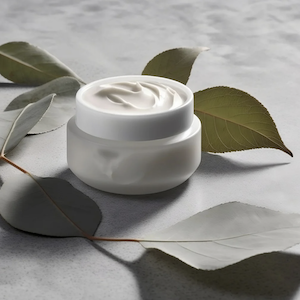Effects of regular exercise on skin moisturizing function in adults

HTML: 6
All claims expressed in this article are solely those of the authors and do not necessarily represent those of their affiliated organizations, or those of the publisher, the editors and the reviewers. Any product that may be evaluated in this article or claim that may be made by its manufacturer is not guaranteed or endorsed by the publisher.
Among lifestyle habits, the effect of exercise on skin moisturizing function has not been studied. Therefore, we aimed to clarify the effect of regular exercise on skin moisturizing function. The participants were 30-64 years old with no history of skin diseases and no exercise habits at the start of the study. The intervention group (n=9) continued to exercise at least 600 Mets/week for 8 weeks, while the control group (n=28) followed conventional lifestyle habits for 8 weeks. Questionnaires regarding lifestyle habits were administered at the beginning and after 8 weeks, and skin moisturizing function (stratum corneum hydration: SC hydration, Trans-Epidermal Water Loss: TEWL) was measured. Analysis of covariance was performed using sex, age, and measurements at the start of the study as covariates. Analysis of covariance showed that after 8 weeks of “moderate” or “higher” exercise, there was a trend toward higher SC hydration in the intervention group compared to that in the control group (p=0.083, η2=0.10). There was no difference in TEWL after 8 weeks (p=0.864, η2=0.00). These results suggest that regular exercise may help maintain and improve skin moisturizing function.
Augustin M, Kirsten N, Körber A, et al. Prevalence, predictors, and comorbidity of dry skin in the general population. Eur Acad Deratol Venereol 2019;33:147–50. DOI: https://doi.org/10.1111/jdv.15157
Verdier-Sévrain S, Bonté F. Skin hydration: a review on its molecular mechanisms. J Cosmet Dermatol 2007;6:75–82. DOI: https://doi.org/10.1111/j.1473-2165.2007.00300.x
Proksch E, Brandner JM, Jensen JM. The skin: an indispensable barrier. Exp Dermatol 2008;17:1063–72. DOI: https://doi.org/10.1111/j.1600-0625.2008.00786.x
Tanei R. Xeroderma in the elderly, Pruritus, Treatment and care of lipid deficient eczema. Japan Medical Jurnal 2012;4578:67-72.(In Japanese)
Berardesca E, Loden M, Serup J, et al. The revised EEMCO guidance for the in vivo measurement of water in the skin. Skin Res Technol 2018;24:351–8. DOI: https://doi.org/10.1111/srt.12599
Krueger N, Luebberding S, Oltmer M, et al. Age-related changes in skin mechanical properties: a quantitative evaluation of 120 female subjects. Skin Res Technol 2011;17:141–8. DOI: https://doi.org/10.1111/j.1600-0846.2010.00486.x
Farage MA, Miller KW, Elsner P, et al. Intrinsic and extrinsic factors in skin ageing: a review. Int J Cosmet Sci 2008;30:87–95. DOI: https://doi.org/10.1111/j.1468-2494.2007.00415.x
Robinson MK. Population differences in skin structure and physiology and the susceptibility to irritant and allergic contact dermatitis: implications for skin safety testing and risk assessment. Contact Dermatitis 1999;41:65–79. DOI: https://doi.org/10.1111/j.1600-0536.1999.tb06229.x
Thornton M. Estrogens and aging skin. Dermatoendocrinol 2013;5:264–70. DOI: https://doi.org/10.4161/derm.23872
Lephart ED, Naftolin F. Menopause and the skin: Old favorites and new innovations in cosmeceuticals for estrogen-deficient skin. Dermatol Ther 2021;11:53–69. DOI: https://doi.org/10.1007/s13555-020-00468-7
Iizaka S. Skin hydration and lifestyle-related factors in community-dwelling older people. Arch Gerontol Geriatr 2017;72:121–6. DOI: https://doi.org/10.1016/j.archger.2017.05.016
Asakura K, Nishiwaki Y, Milojevic A, et al. Lifestyle factors and visible skin aging in a population of Japanese elders. J Epidemiol 2009;19:251–9. DOI: https://doi.org/10.2188/jea.JE20090031
du Plessis J, Stefaniak A, Eloff F, et al. International guidelines for the in vivo assessment of skin properties in non-clinical settings: Part 2. transepidermal water loss and skin hydration. Skin Res Technol 2013;19:265–78. DOI: https://doi.org/10.1111/srt.12037
Altemus M, Rao B, Dhabhar FS, et al. Stress-induced changes in skin barrier function in healthy women. J Invest Dermatol 2001;117:309–17. DOI: https://doi.org/10.1046/j.1523-1747.2001.01373.x
Hunter HJ, Momen SE, Kleyn CE. The impact of psychosocial stress on healthy skin. Clin Exp Dermatol 2015;40:540–6. DOI: https://doi.org/10.1111/ced.12582
Yoshizaki T, Kimira Y, Mano H, et al. Association between skin condition and sleep efficiency in Japanese young adults. J Nutr Sci Vitaminol 2017;63:15–20. DOI: https://doi.org/10.3177/jnsv.63.15
Rossi M, Santoro G, Maurizio S, Carpi A. Spectral analysis of skin blood flowmotion before and after exercise in healthy trained and in sedentary subjects. Int J Sports Med 2006;27:540–5. DOI: https://doi.org/10.1055/s-2005-865825
Crane JD, MacNeil LG, Lally JS, et al. Exercise-stimulated interleukin-15 is controlled by AMPK and regulates skin metabolism and aging. Aging Cell 2015;1:25–634. DOI: https://doi.org/10.1111/acel.12341
Tokunaga M. Development of health and life habit inventory (DIHAL.2). Health Sci 2005;27:57-70. (In Japanese).
The IPAQ Group. Guidelines for Data Processing and Analysis of the International Physical Activity Questionnaire (IPAQ). Available at https://sites.google.com/site/theipaq/scoring-protocol. [Last accessed November 20, 2022].
White-Chu EF, Reddy M. Dry skin in the elderly: complexities of a common problem. Clin Dermatol 2011;29:37–42. DOI: https://doi.org/10.1016/j.clindermatol.2010.07.005
Naik S, Bouladoux N, Wilhelm C, et al. Compartmentalized control of skin immunity by resident commensals. Science 2012;337:1115–9. DOI: https://doi.org/10.1126/science.1225152
Wakeman MP. An open-label forearm-controlled pilot study to assess the effect of a proprietary emollient formulation on objective parameters of skin function of eczema-prone individuals over 14 days. Clin Cosmet Investig Dermatol 2017;10:275–83. DOI: https://doi.org/10.2147/CCID.S135841
Draelos ZD, Gunt H, Zeichner J, Levy S. Clinical evaluation of a nature-based Bakuchiol anti-aging moisturizer for sensitive skin. J Drugs Dermatol 2020;19:1181–3. DOI: https://doi.org/10.36849/JDD.2020.5522
Oizumi R, Sugimoto Y, Aibara H. The association between activity levels and skin moisturising function in adults. Dermatol Rep 2021;13:8811. DOI: https://doi.org/10.4081/dr.2021.8811
Copyright (c) 2023 the Author(s)

This work is licensed under a Creative Commons Attribution-NonCommercial 4.0 International License.
PAGEPress has chosen to apply the Creative Commons Attribution NonCommercial 4.0 International License (CC BY-NC 4.0) to all manuscripts to be published.





 https://doi.org/10.4081/dr.2023.9711
https://doi.org/10.4081/dr.2023.9711



